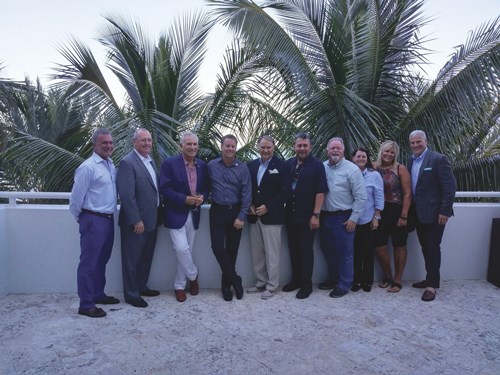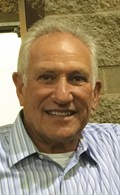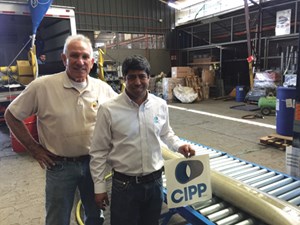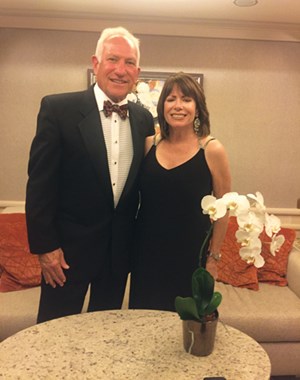August 2019 Vol. 74 No. 8
Rehab Technology
NASSCO Standard Bearer: Steve Gearhart
EDITOR’S NOTE: The National Association of Sewer Service Companies (NASSCO), now in its 45th year, continues to set standards for the assessment and rehabilitation of underground infrastructure. Many individuals have contributed to the success of the association and driven NASSCO’s industry mission. This series of articles recognizes those who have not only been critical to the success of NASSCO, but the industry as well.
This month’s profile is of Steve Gearhart, currently chairman of CIPP Corp. He continues to contribute his knowledge and experience to NASSCO, WEF and other industry organizations.
I grew up in the Midwestern United States, on the south side of Waterloo, Iowa. Not only is this area considered to be the heartbeat of America, I would venture to say that it is also the heartbeat of the early beginnings of the inspection and maintenance of underground infrastructure.
Back in the 1960s, my father worked as a salesman for O’Brien Manufacturing, which is today Sewer Equipment Company of America. The company’s founder, H.T. O’Brien, was an early pioneer in making and selling sewer cleaning equipment. H.T. helped people like Jack Doheny and my father, Vic Gearhart, who worked together at O’Brien, get their start in the sewer inspection and cleaning industry.
When I turned 16, my father recognized my mechanical skills and hired me to drive into Chicago to pick up new sewer cleaning equipment for delivery to municipalities in the Midwest, take the trade ins, refurbish and paint them, and re-sell them to other municipalities in our territory. I learned a lot back in those days about the value of the work we did, as well as the operation of sewer cleaning equipment.
After high school graduation I enrolled in medical school, but three years into the program I felt the tug of the sewer cleaning industry pulling me back. In 1973, my father and I started our own company, Municipal Pipe Tool Company Inc. Over time, the company and its affiliates grew quite large, with contracts to inspect and maintain sewer systems for nearly 400 cities.
Our company was also one of the first to offer CCTV inspections west of the Mississippi. This advancement in using CCTV technology to inspect sewer pipes was huge. Previously, 35-mm cameras took photos every two feet and the film had to be developed to assess the condition.
Sometimes all you could see was a big ball of roots as the still camera was winched from manhole to manhole. When video cameras were introduced, the accuracy of the inspection resulted in significant improvements and better standards for our industry.
Beginnings
Shortly after we formed Municipal Pipe Tool Company, I got a call from Ernie Alexander, Bob Bremmer, Will Jacques and several others about this idea they had to form a trade association. The mission would be to bring together contractors to set standards for the assessment, maintenance and rehabilitation of underground infrastructure, and to promote the acceptance and growth of trenchless technologies.
At first, I wasn’t so sure. I couldn’t envision two competitors sitting across a table from each other working toward the same goals. I could, however, envision an industry that had more than ample opportunity for everyone to succeed, by building awareness for the need to properly assess and maintain our failing underground infrastructure. So, I signed on, and together with many other industry professionals, helped form NASSCO in 1976.
I jumped right in and am honored to have been so deeply involved in some of NASSCO’s major milestones over the years. It had been a goal of mine for many years to try and establish a program where there would be standardization of TV inspection comments. I served as president of the board of directors from 2000-2001, the year NASSCO’s Pipeline Assessment Certification Program (PACP) was being developed for launch in 2002.
PACP is quite possibly the number-one, most important contribution that myself and NASSCO have made to our members, our industry and our communities. By developing a common language for consistency in condition assessment, we now have a much higher level of data integrity for proper asset management, which saves both time and money.
Some of the other contributions I made, however, are much closer to my heart. One example is NASSCO’s Select Society of Sanitary Sewer Sleuth Award. While light-hearted in nature, the selection of inductees does not come easily. They are unanimously voted by past Sleuths, as people who gave their all to NASSCO and our industry.
The first four Sleuths, which I selected, were Greg Laszczynski, Norm Sirna, Al Colthorp and Trent Ralston. I received the Award in 2002 and am honored to be a member of this Select Society that helps encourage advocacy, high levels of involvement and excellence in the work we do.
Another important NASSCO milestone during that time was the development of the Jeffrey D. Ralston Memorial Scholarship. Jeff was a young industry professional who got his start in this industry at his family’s company, TRB Specialty Rehabilitation Inc., a company that assessed and repaired underground infrastructure. A highly involved NASSCO member, Jeff also served on NASSCO’s Board of Directors, and passed away suddenly at the age of 34. Shortly after Jeff’s death, at NASSCO’s 2001 Annual Conference in San Diego, I took that opportunity to announce the establishment of the Scholarship in his honor. To date, this scholarship has been awarded 32 times to encourage young people like Jeff to choose our industry as a viable and highly respected career choice.
NASSCO has recently become much more active in government relations, and as a 501 c (6) trade organization, it is the right thing to do. Our initiatives work to ensure that the repair of sewer and water systems is included in all infrastructure bills, positively impacting the funding we need in future years. While government relations initiatives don’t deliver immediate, tangible results, it is incredibly important in order to make sure our nation has the funds needed to keep our communities healthy and safe.
Advocacy of the work we do is critical. I had the opportunity and was very proud to represent NASSCO and the grouting industry, when the EPA attempted to ban acrylamide grout back in 1990. My earlier fears about competitors working together were blown apart, as the industry joined forces to fight the EPA’s position. NASSCO hired attorneys and I, along with Trent Ralston and David Magill, presented our case to the U.S. Office of Management and Budget on Capitol Hill. We were successful.
We’ve accomplished a lot together in the past, and my hope for the future is that our industry continues to develop products and services that one day soon will result in zero CSOs and SSOs. I see NASSCO being a big part of that by continuing to educate engineers and municipal employees to use intelligent, decision-making processes for proper rehabilitation; and expand awareness in Washington, D.C., and at the state level, of the ongoing need for funding underground infrastructure. •








Comments